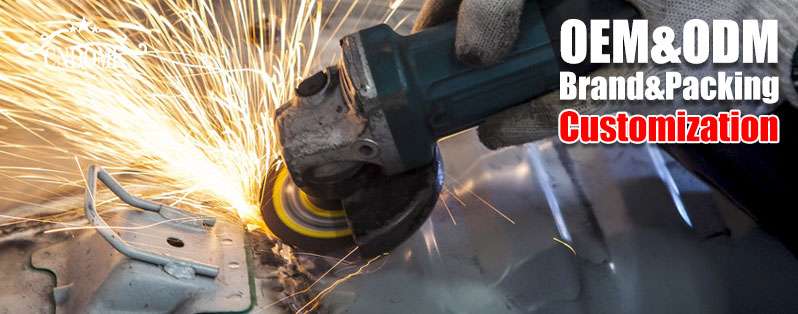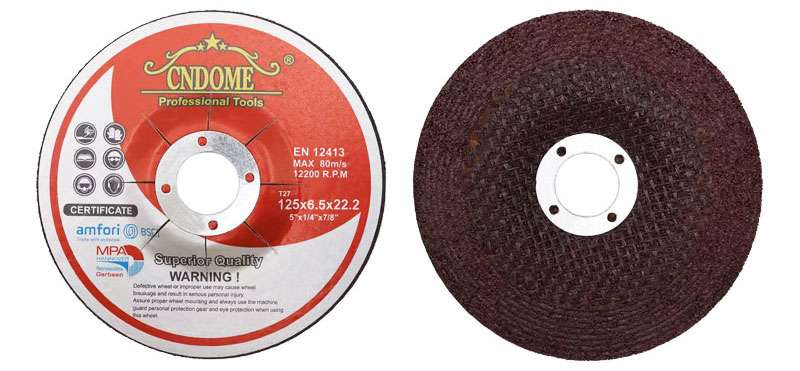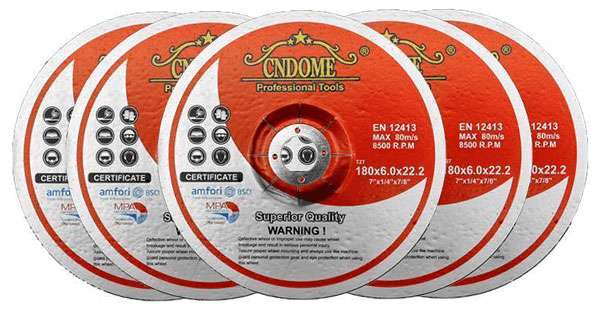Choosing the right grinding wheel is crucial for ensuring optimal performance in various applications, whether you’re working with metals, wood, or stone. Each material requires a specific type of grinding wheel, designed to handle the unique characteristics of the material. In this blog, we’ll cover the key factors to consider when selecting the appropriate grinding wheel for your project.
1. Understand the Material You’re Working With
The first step in selecting the right grinding wheel is knowing what material you’ll be working on. Grinding wheels are designed for specific materials, and using the wrong type can result in poor performance, inefficiency, or even damage to the wheel or material. Common material types include:
- Ferrous Metals: Iron, steel, and stainless steel
- Non-Ferrous Metals: Aluminum, brass, and copper
- Masonry: Concrete, stone, and ceramics
- Wood: Softer materials that require different abrasive properties
2. Abrasive Type
Grinding wheels are made from abrasive grains bonded together. The type of abrasive grain determines the wheel’s cutting action and performance. Common abrasive types include:
- Aluminum Oxide (A/O): Ideal for grinding ferrous metals such as steel. It’s durable and long-lasting.
- Silicon Carbide (SiC): Suitable for grinding non-ferrous metals like aluminum and brass, as well as stone and glass.
- Zirconia Alumina: Offers excellent cutting performance on hard metals and stainless steel, providing a balance of toughness and sharpness.
- Ceramic Alumina: Superior for high-performance grinding, especially on tough, heat-sensitive metals.
3. Wheel Grade (Hardness)
The hardness of the wheel is determined by the bond between the abrasive grains. The grade can range from soft to hard:
- Soft Grade: Used for harder materials, as it allows the grains to wear out quickly, exposing fresh abrasive surfaces. Ideal for fast material removal.
- Hard Grade: Suitable for softer materials, ensuring that the abrasive grains stay bonded longer and do not wear away too fast.
4. Grit Size
The grit size of the wheel determines how coarse or fine the grinding will be. Lower grit numbers represent coarser wheels, while higher numbers represent finer wheels:
- Coarse Grit (16 – 24): For fast removal of material and rough finishing, especially on metals.
- Medium Grit (36 – 60): Suitable for general-purpose grinding and light finishing.
- Fine Grit (80 – 120): Ideal for precision work and smooth finishing.
5. Wheel Shape and Size
Grinding wheels come in a variety of shapes and sizes, each suited for specific tasks:
- Straight Wheel: The most common wheel shape used for surface, cylindrical, and tool grinding.
- Cup Wheel: Used for surface grinding of flat surfaces and sharpening tools.
- Dish Wheel: Suitable for grinding in hard-to-reach areas, like the corners of molds or dies.
- Cylinder Wheel: Designed for surface grinding large, flat areas.
The size of the wheel is also important. A larger diameter wheel will remove more material quickly, while a smaller wheel allows for precision grinding.
6. Bond Type
The bond holds the abrasive grains together. The type of bond affects the performance of the wheel:
- Vitrified Bond: A strong, durable bond that can handle high-pressure grinding and high-temperature conditions.
- Resinoid Bond: More flexible than vitrified bonds, offering good cutting action and suited for applications that require a softer touch.
- Metal Bond: Used for grinding very hard materials, such as ceramics and glass.
7. Wheel Speed and RPM
Always consider the maximum speed rating of the grinding wheel and match it to the tool’s RPM (revolutions per minute). Exceeding the wheel’s speed rating can cause it to break apart, leading to safety hazards.
8. Coolant Use
In some grinding operations, especially on heat-sensitive metals, using a coolant can improve performance by reducing heat and friction. Coolant helps to maintain the sharpness of the wheel and extends its lifespan.
Conclusion
Selecting the right grinding wheel is all about matching the wheel’s properties to the material and task at hand. Consider factors like material type, abrasive grain, grit size, wheel shape, and speed when making your decision. By doing so, you’ll ensure both efficient grinding and a longer tool life.
By taking the time to choose the correct grinding wheel, you’ll save time, money, and effort while achieving the best results.



